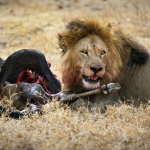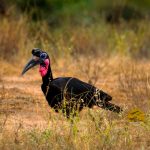Unveiling the Secret: The Grey-cheeked Mangabey – Uganda’s Elusive Forest Dweller.
Grey-Cheeked Mangabey (Lophocebus albigena); The thick rainforests of Uganda are rich in bio-diversity and host some of the most interesting primates of Africa, including the enchanting Grey-cheeked Mangabey. This is one of the best-looking primates that are usually found in quite lively social groups. Elusive yet charismatic, here is a deep dive into the life of the Grey-Cheeked Mangabey, where to find them, and what makes them so captivating for travelers to add onto this rich tapestry of Uganda’s wildlife.
Meet the Grey-Cheeked Mangabey: The Basics.
The Grey-Cheeked Mangabey is a medium-sized monkey with thick, dark-grey fur and a distinctive light patch on its cheeks, hence its name; With his expressive face and lively nature, this primate is exceptional, not only in his looks but also in his wit. Grey-cheeked mangabeys climb nimbly and can often be seen leaping from branch to branch in search of food. They weigh between 4-11 kilograms, with males larger than females, a common trait in many primate species.
Unique Characteristics.
Cheek Pouches: Like other Old World monkeys, the Grey-Cheeked Mangabeys have cheek pouches where they are able to momentarily store food, allowing them to forage quickly in areas where competition against other species is great.
Distinct Calls: The Grey-Cheeked Mangabeys are vocal loud animals; they make whooping loud calls that may help keep the group in contact and advertise their territoriality.
Where to See Grey-Cheeked Mangabeys in Uganda.
The Grey-cheeked Mangabey is generally found in the thick forests of central and western Uganda. Their ideal habitat includes tropical lowland and montane forests offering perfect shelter and food resources in the form of fruits, seeds, and insects among others. Below are the best places you should look out for these special primates in Uganda:
Kibale Forest National Park: This is considered the centre of Uganda’s primate tracking. Kibale boasts one of Africa’s largest populations of Grey-Cheeked Mangabeys. The rainforest of Kibale, with a tall and dense canopy and a plethora of food, provides optimal conditions for the primates. Visitors often encounter them while on chimpanzee tracking excursions.
Mabira Forest Reserve: The one closer to Kampala and thus more convenient for the traveler who would wish to view Uganda’s primate life without going too far. Mabira’s trails can provide opportunities to see these mangabeys besides several other bird and mammal species.
Budongo Forest Reserve: This is the other hotspot outside Murchison Falls National Park where Grey-Cheeked Mangabey are often seen. Budongo has research centers and eco-trails that are useful in observing these primates while at the same time learning about forest conservation efforts.
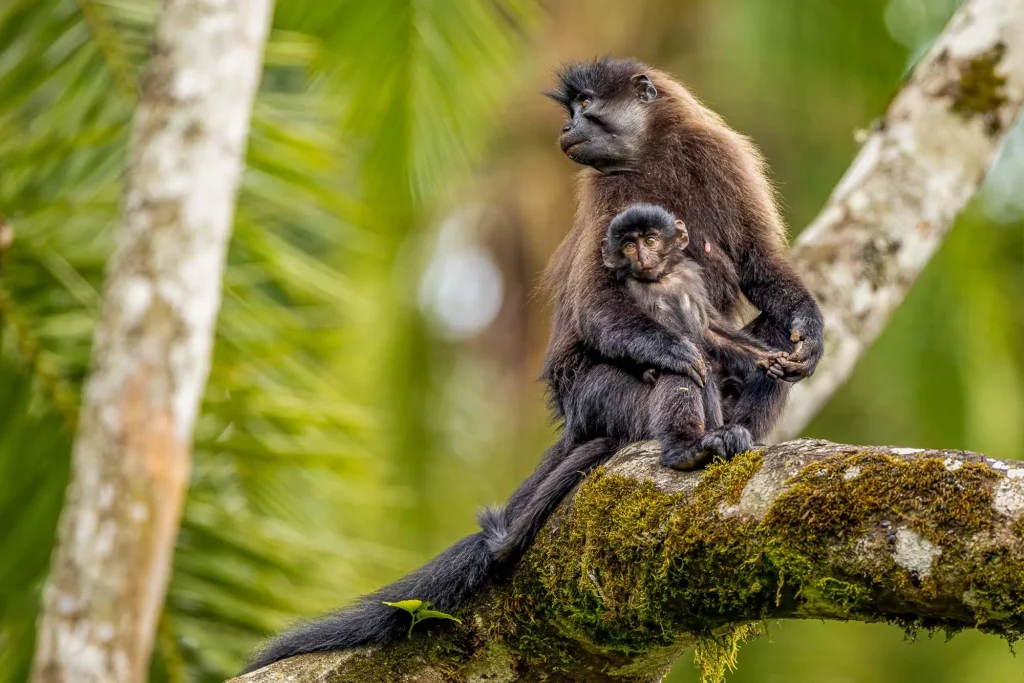
The Life and Behavior of Mangabeys.
The Grey-cheeked Mangabeys are diurnal and hence highly active during the daytime through the tree tops in search of food. Their main food consists of fruits, seeds, and flowers, though it occasionally consists of insects, especially at the beginning of the dry season when fruit is scarce.
Social Structure: Grey-cheeked mangabeys stay in groups, which can consist of just a couple to up to 30. Their groups are normally dominated by full-grown males, while among females, tight relationships forge through ongoing grooming and support.
They communicate in all ways that include vocalizations, facial expressions, and gestures to help them maintain coherence in their group, warn other members of impending dangers or call each other in a dense forest.
Survival Challenges: Although this is naturally set for forest life, it does face challenges that include habitat loss because of deforestation. Forests are being cleared for agriculture and logging; hence their assurance of survival in Uganda largely depends on conservation.
How long do grey-cheeked mangabeys live?.
The life of the Grey-Cheeked Mangabey is around 20-25 years in the wild. In captivity, though, with minimal risks, they often live a little longer, sometimes to 36 years. Their lifetimes depend on several factors such as quality of habitat, available food, and risks due to human activities or predators.
Gestation Period of Grey-Cheeked Mangabey.
The gestation period of Female Grey-Cheeked Mangabeys is approximately 5-6 months or about 170-183 days. Most often, they give birth to a single baby after this period. Further, the infants are looked after within the social group, and the mothers are very attentive; such attention given to the infants helps them in learning various survival and social modes of interaction in the first several months of life.
Conservation of Mangabeys in Uganda.
The country is committed to the conservation of its wildlife inheritance, including that of the primates, like the Grey-cheeked Mangabey. In cooperation with the government of Uganda, various organizations have engaged in protecting these special animals and their habitats through various programs such as:
Protected Areas: National parks and forest reserves, such as Budongo and Kibale, are in a way crucial to the conservation of mangabey populations, since these areas offer them a safe habitat; The strict controls against logging, hunting, and encroachment ensure that these forests will remain a haven for several species of Uganda’s fauna.
Research and Monitoring: Research by primatologists and conservationists in Uganda, on grounds that are ongoing, is important in trying to ascertain the behavioral and social patterns and strategies of adaptation that the mangabeys have adopted, for use in effective conservation planning.
Community Education: Programs that involve the local communities on issues relating to the need to protect forest habitats are very necessary; Most Ugandan communities border these forested areas, and through this conservation, the locals are taught on the importance of preserving wildlife.
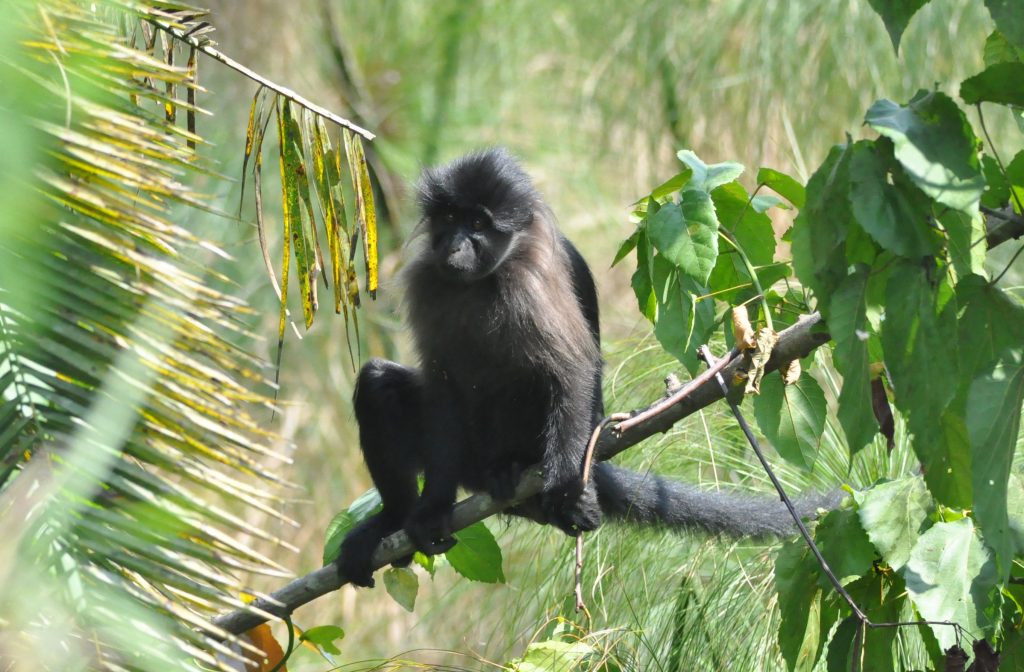
Why You Should Track Grey-Cheeked Mangabeys in Uganda.
For the lovers of wildlife, tracking Grey-Cheeked Mangabeys is an exciting and very special experience. Unlike these famous primate cousins, gorillas and chimpanzees, mangabeys are not as much in demand, and hence, any encounter with them is like a hidden treasure in Uganda’s forests. Their graceful movement across the trees, complex social behavior, and remarkable looks make for great moments in the wild.
Tips for a Successful Mangabey Trekking Experience.
Go Early in the Morning: Start off early in the morning, as these primates can best be seen at this time when they are quite active.
Be Prepared for Dense Forests: Generally speaking, most mangabey habitats are pretty dense and humid, so long sleeves and some good, solid hiking boots will make the experience all the more enjoyable.
Be quiet and listen or observe: These monkeys may be wary of humans, but patience pays off. Their distinctive calls or rustling in the treetops can guide you to them.
The Future of Mangabeys in Uganda.
With continued conservation, the future of Uganda’s Grey-Cheeked Mangabey is bright; however, like most forest species, they will remain in danger due to habitat destruction and climate change; The traveler can go a long way in conserving the mangabey by visiting protected areas, supporting conservation tourism, and raising awareness about their plight. Uganda’s commitment to its primate populations means that ongoing support ensures future generations get to marvel at these remarkable creatures.
Come for the unique diversity of primates in Uganda.
The forests of Uganda teem with life, and though the Grey-Cheeked Mangabey may be lesser-known than some of its charismatic primate cousins, it is every bit as charismatic in its own right; You will get to see not only this Grey-Cheeked Mangabey in its habitat but also support the conservation effort that keeps these habitats alive by venturing into Uganda’s protected rainforests-from the dense greenery of Kibale up to the historic trees of Budongo, right in the heart of Uganda’s pristine wilderness, that’s where you’ll find the Grey-Cheeked Mangabey.
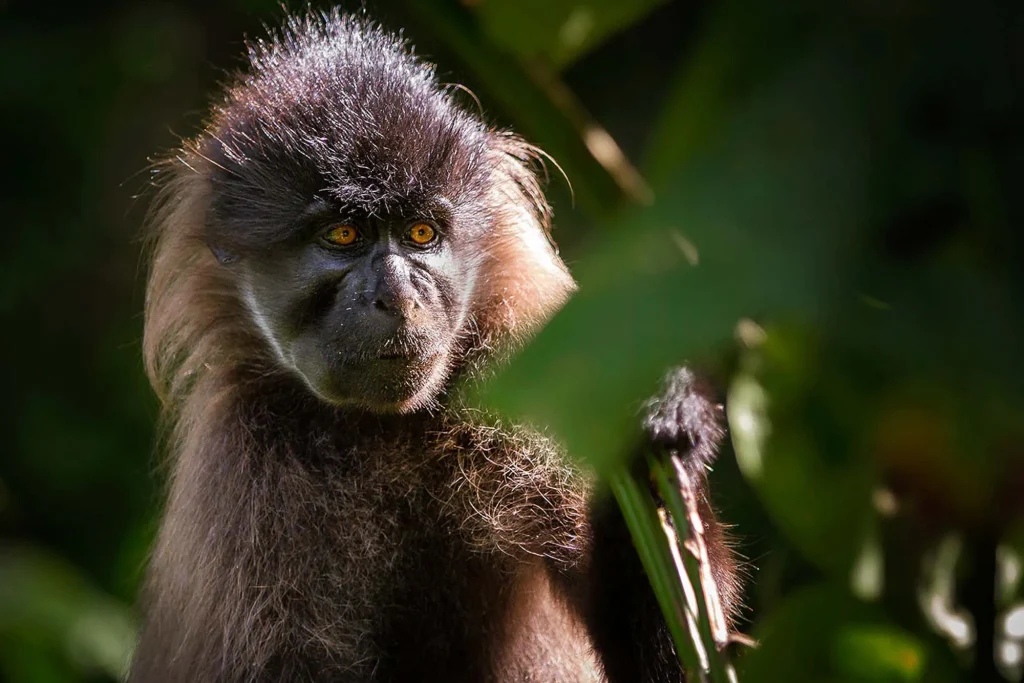
Our Remarkable Uganda Primates Safaris.
22 Days Best of Uganda Wilderness Adventure
18 Day Exploring Uganda Safari
15 Day Gorillas-Chimps and Big Five Safari
14 Day Uganda-Rwanda Wildlife and Primates Safari
10 Day Uganda Wildlife and Primates Safari
10 Day Highlights of Uganda Safari
3 Day Gorillas and Lake Bunyonyi Safari
8 Day Gorillas-Chimps and Big Five Experience
7 Day Murchison Falls with Chimps and Gorillas
6 Day Gorilla Trekking and Queen Elizabeth
5 Day Gorillas and White Water Rafting
4 Day Kibale Forest Chimpanzee Tracking
3 Day Gorilla Trekking and Batwa Trails in Bwindi
3 Day Fly to Bwindi Gorilla Safari
Remarks on Grey-Cheeked Mangabey in Uganda.
The Grey-cheeked Mangabey is an interesting, though less well-known, primate that inhabits Uganda’s dense rainforest with its active social behavior and distinctive calls. It is mainly found in protected areas, which include Kibale National Park and Budongo Forest, where these acrobatic monkeys are always found, although highly threatened due to habitat loss. The very interesting sight of a Grey-cheeked Mangabey in their natural habitat is a reminder of Uganda’s rich biodiversity, while at the same time underlining the relevance of continued conservation to save such unique primates and their forest homes.





